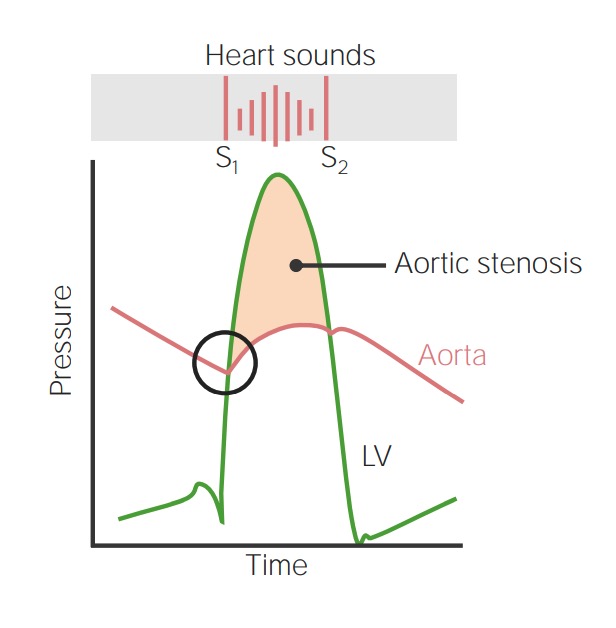Playlist
Show Playlist
Hide Playlist
Bicuspid Aortic Valve and Mitral Annular Calcification
-
Slides Valvular Hypertensive Heart Disease.pdf
-
Reference List Pathology.pdf
-
Download Lecture Overview
00:01 Okay. Already mentioned this, but it's worth repeating. 00:04 The bicuspid aortic valves are predisposed to earlier progressive calcification. 00:08 So, instead of developing calcific generation in your 70s, 80s, and 90s if you have a normal tricuspid valve, bicuspid aortic valves will present with calcification in the 40s, 50s, and 60s. 00:22 Because of the abnormal valve opening and closing, not only can you get aortic stenosis, but they can be more prone to aortic regurgitation as well. 00:32 And because of abnormal flow, there are going to be potential niduses for infective endocarditis. 00:39 There are often defects that go along with that bicuspid aortic valve. 00:48 So, whatever the genetic underpinnings are for the bicuspid aortic valve, it also tends to cause aortic root dilation and/or dissection. 00:56 So, when we do surgical repairs on a bicuspid aortic valve, not only do we replace the valve, but we also tend to replace the proximal aortic root, because there's going to be connective tissue defects in that tissue as well. 01:11 All right. That covers a lot of material in the aortic valve territory having to do with calcification. 01:17 Let's talk about mitral calcification. 01:20 And as opposed to aortic valve calcification which happens on the cusps, if you calcify the mitral valve, it tends to happen on its fibrous annulus. 01:30 So, it's not in the valve leaflet material itself, but rather the ring of connective tissue that forms the annulus. 01:38 The nodules can be small to large-ish, half a centimeter. They're stony hard. 01:45 They're the same kind of calcium hydroxyapatite as occurs on the valve cusps of the aortic valve. 01:51 They can ulcerate. So, they can erode through, and it causes superficial ulcerations by destroying the overlying endothelium. 02:00 It usually doesn't affect valvular function all that much. 02:05 This is in the annulus, not on the leaflet. 02:08 But when they erode through, they can be a focus nidus for thrombus formation or for endocarditis because of aberrant flow over the surface. 02:19 We're showing here the posterior leaflet and some of the complications, but if you have large calcifications on the anterior annulus as shown here, sitting right opposite that rock of calcification on the anterior annulus is the atrial ventricular node. 02:37 And if that gets large enough and impinges on the AV node enough, you can have complete heart block.
About the Lecture
The lecture Bicuspid Aortic Valve and Mitral Annular Calcification by Richard Mitchell, MD, PhD is from the course Valvular and Hypertensive Heart Disease.
Included Quiz Questions
For which of the following conditions are patients with bicuspid aortic valves NOT at increased risk?
- Inflammatory aortitis
- Aortic dilatation/dissection
- Infective endocarditis
- Early calcification of the aortic valve
- Aortic regurgitation
Where do calcifications of the mitral valve most commonly occur?
- Fibrous annulus
- Papillary muscles
- Outflow tract
- Inflow tract
- Valve leaflets
Customer reviews
5,0 of 5 stars
| 5 Stars |
|
5 |
| 4 Stars |
|
0 |
| 3 Stars |
|
0 |
| 2 Stars |
|
0 |
| 1 Star |
|
0 |




